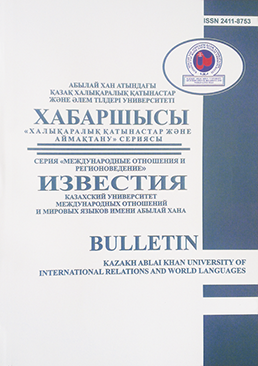XINJIANG PRODUCTION AND CONSTRUCTION CORPS IS A GUARANTEE OF THE SECURITY OF PRC BORDER REGIONS WITH KAZAKHSTAN
DOI:
https://doi.org/10.48371/ISMO.2023.53.3.015Keywords:
Xinjiang Production and Construction Corps, Northwestern border region, border security, separatism, division, agriculture, infrastructure, labor campsAbstract
The Xinjiang Production and Construction Corps (hereinafter referred to as the Corps) is an important tool for managing the multinational Xinjiang Uygur Autonomous Region, located in the northwestern region of China. Since its inception in 1954, the Chinese authorities, deploying military units as part of the corps in the border area, have set themselves two different goals: firstly, the protection of the state border, maintaining the security of the border areas, and secondly, to contribute to the socio-economic development of the border region.
This article provides a broad analysis of the features of the military and economic activities of the Corps, which has become the main pillar of Beijing's policy in Xinjiang. To date, the People's Republic of China is implementing a policy of development of the northwestern region of the country. From this point of view, the purpose of this work is to determine the strategic importance of the specified region, to determine the activities of the Corps, contributing to the socio-economic development of the region bordering Kazakhstan, improving its infrastructure, on the course of enhancing international trade and economic relations in the specified region.
However, the process of adaptation of the Corps to the market economy is very slow. In addition, despite the great achievements achieved in certain areas of the national economy, the mentioned organization still cannot get rid of dependence on the financial and political support of the Center. There are factors that prevent the Corps from continuing to operate as an independent institution. Tensions between the government of Xinjiang and the local population with the Corps directly affect the performance of the Corps. In this context, the article examines the causes of strained relations between the Corps and the local population and ways to prevent negative factors in the future.







